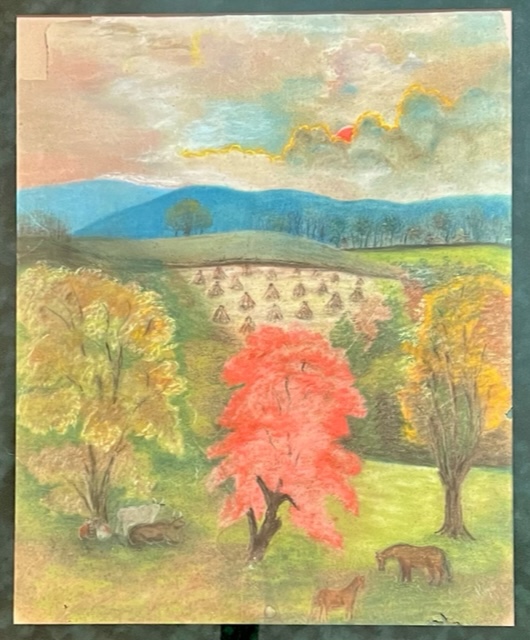“Stories in the Attic” is a series compiled and edited by Edith Crockett, Waterford Foundation Archives & Local History Collections Subcommittee. Individual stories are written by different authors. This month’s “story” is the result of a collaboration between Bronwen C. Souders and Jane Williams.
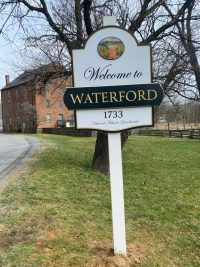 Bronwen C. Souders grew up in the American West and in a recent interview said her younger self found history “boring”. The past 50 years living near Waterford have changed her perspective. Now, as she used to say of her friend and mentor, historian John Divine, she is more familiar with the village of the 1820s than of the 2020s. This month’s interview with Bronwen focuses on the A.W. Phillips Meadow pastel, created by
Bronwen C. Souders grew up in the American West and in a recent interview said her younger self found history “boring”. The past 50 years living near Waterford have changed her perspective. Now, as she used to say of her friend and mentor, historian John Divine, she is more familiar with the village of the 1820s than of the 2020s. This month’s interview with Bronwen focuses on the A.W. Phillips Meadow pastel, created by
Mary “Molly” Dutton Steer, a Quaker, in 1900. Think you have never seen this artwork? Think again. It graces Waterford’s new signs on the entrances to our village. Nearly lost to history, the pastel has recently been reframed for preservation by the Archives & Local History Collections Subcommittee.
Jane: Bronwen, how did the Dutton Steer pastel come to the Waterford Historical Collections?
Bronwen: More than 20 years ago, I was visiting with John Middleton (1925-2021) to discuss his early memories of Waterford. John grew up in the village and was a member of the African American Collins family, long-time residents of the Waterford area. He told me he had an old picture of Waterford that I might be interested in. (His daughter only wanted the frame.) It was a charming view of the Phillips Farm from Second Street.
Jane: Who was Molly Dutton Steer?
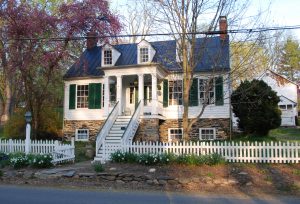
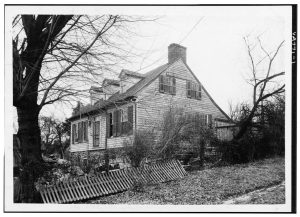
Molly Steer grew up at Sunnyside, a house that still stands on Second Street. She was the artist of the four Dutton sisters. Sisters Lida and Lizzie, along with Sarah Steer, created the Waterford News. This pro-Union newspaper was one of the few women-run newspapers in the country during the Civil War. Their father, John B. Dutton, was a strong Unionist who, with Sarah’s father Samuel Steer, sat out the war at Point of Rocks, Maryland, sneaking home periodically to see their families.
In the early 2000s, the owner of the Phillips Farm died, and 144 acres of the farm came on the market. The Waterford Foundation raised $2M to purchase the property, but a developer won the sales contract and announced plans to develop the property as a residential subdivision. The Foundation worked with the community, the Trust for Public Land, and other public and private supporters to buy the farm from the developer for just under $3.9M. Read more about this effort from the Washington Post. The Waterford Foundation embarked on an all-out fund-raising effort. To help raise money, the Foundation created T-shirts featuring the historic pastel.
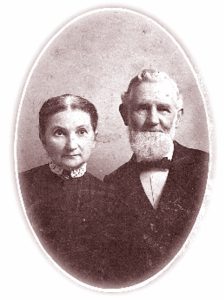
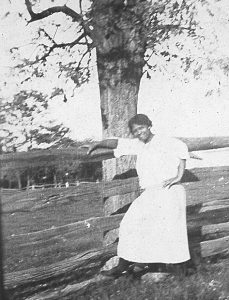
During the war Molly married Franklin M. Steer, son of Second Street neighbor James M. Steer, a blacksmith. She lived into her 90s and eventually moved to a Quaker home in Baltimore, returning to Waterford for summertime visits. During one such visit she gave the pastel to her friend Martha Parmes, a highly respected and much beloved member of the African American community. Miss Parmes most likely passed it along to John Middleton.
Jane: Molly’s friendship with Martha Parmes suggests that the white community and the African American community were intertwined?
Bronwen: Waterford had always been integrated–even house-by-house. There were enslaved African Americans living in White-owned homes, of course, but there were free African Americans who owned homes in Waterford alongside Whites well before the Civil War. The African American community oversaw the Second Street School and built the John Wesley Church in the village. Black and White children played together but never attended the same schools. Black and White women would sometimes share a cup of tea, particularly in Quaker homes.
Jane: Bronwen, thank you so much for your time and invaluable knowledge of Waterford! This lovely pastel gives us an important portrait of how rural Waterford looked in the past. And, as an artifact, provides insight into the close relationships among individuals despite racial segregation. Thank you!
